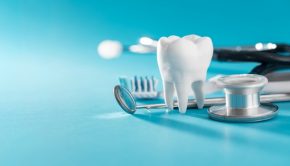Keep Tabs on Oral Health Between Dental Visits
Brush and flossing regularly should make us feel confident about the state of our mouth, but then a scheduled exam reveals decay or even gum disease. A lot can happen in the months between dental visits, and brushing and flossing are not the only factors that affect oral health.
Saliva has a number of important jobs, such as washing away food debris and delivering minerals to the teeth to keep their protective enamel strong and intact. It also helps neutralize acids that could otherwise destroy enamel, making teeth more vulnerable to decay. Some of those acids come from what we eat and drink. Others come from the metabolic waste of bacteria that feast on sugars and starches in what we consume, including any foods made from white flour and other refined carbs.
In a healthy mouth, it takes about 20 to 30 minutes for saliva to return the environment to a neutral state. In an unhealthy mouth, conditions can remain more acidic on a day-to-day basis. Regularly checking our oral pH can give us a good read on current oral health. This was demonstrated years ago in a simple study. Three hundred patients took part: 100 with healthy gums, 100 with chronic gingivitis (early stage gum disease), and 100 with chronic periodontitis (advanced gum disease). Saliva samples were taken from each and then analyzed. Compared to their peers with healthy gums, those with periodontitis had more acidic mouths. Those with gingivitis tended to have the most alkaline mouths. This is because alkaline conditions are essential for plaque growth. That plaque irritates the gums, triggering inflammation. Ideally, our oral pH should be around 7.0, which is true neutral.
All we need are test strips. To make sure to get an accurate result, don’t eat or drink anything for at least two hours before testing the saliva. Then, fill the mouth with saliva and swallow or spit it out. Fill the mouth with saliva again and place a small amount on a test strip. To determine the pH of the sample, compare the color of the strip to the chart on its container
If saliva is consistently acidic, the place to start fixing that is diet. While each person’s specific needs can vary, the ideal is a diet centered on real, minimally processed food, with lots of fresh produce and limited refined grains and added sugars (even natural or healthier choices like honey, molasses and agave). Think paleo, keto, Wise Traditions and similar ways of eating. Most common beverages tend toward the acidic—even unflavored, unsweetened seltzers—and so should be enjoyed only occasionally.
Flat water should be the go-to. But even some brands of flat water can actually be acidic. One study of a dozen bottled or tap water sources found that half of them had pH levels below 7.0, despite the claims given in water quality reports or on websites. This included the two most readily available brands, Dasani and Aquafina. Both samples of tap water that they tested were slightly alkaline. Of course, both also contained fluoride. That, at least, can be removed before drinking.
Vladimir Gashinsky, DDS, is the founder of The Holistic Dental Center of New Jersey, in Millburn. For appointments or more information, call 973-457-4244 or visit HolisticDentalCenterNJ.com.





























